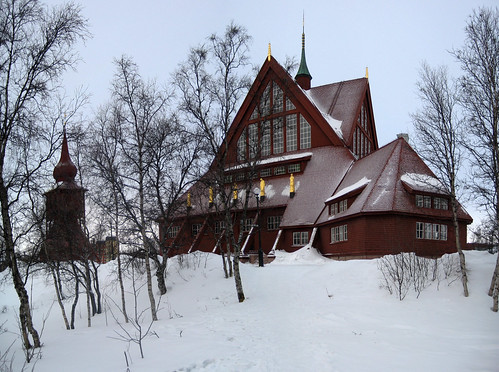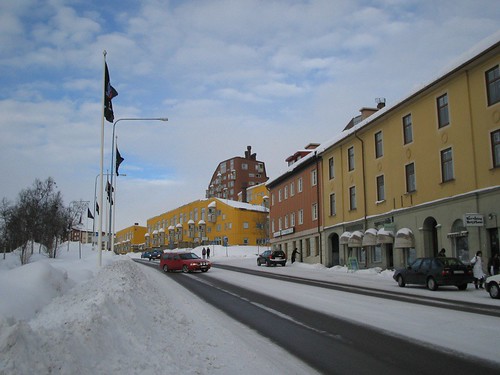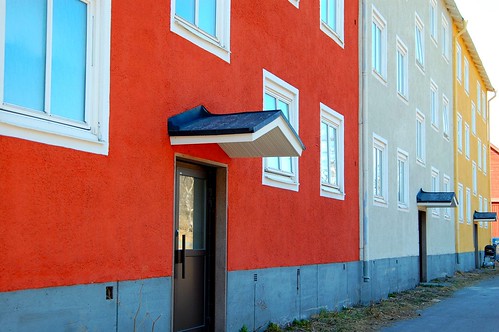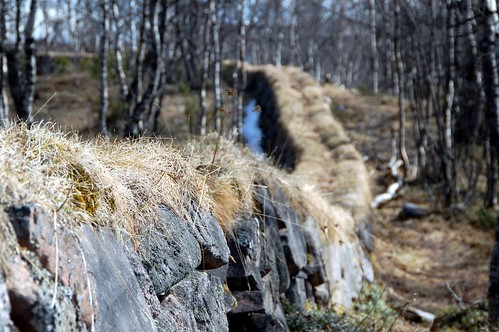Winter Cities Part I
Posted by Adrienne on November 7, 2012
I’m immersing myself in winter right now. Research for the second phase of the park project (mentioned in the last post) is exploring how the neighborhood can embrace winter in the park, activating it year-round to keep out crime. I’ve been looking at how other cities in winter climates embrace – or at least cope with – the season of cold and dark and snow. Do they design buildings/streets/open space differently? How do they plan their public transit or bike infrastructure? What cultural practices are a response to winter’s negative aspects? How do they celebrate the positive aspects?
While reading about various towns in northern climates (and keeping Google maps handy to look up where they are) I came across some beautiful images of Kiruna, the northern-most city in Sweden. Kiruna is the epitome of a winter city. North of the Arctic Circle, the average daily high in January is 12 °F. To give you an idea of how cold that is, the average daily high in January in the Twin Cities is 21.9 °F.
Brr.
Kiruna certainly knows how to design for winter. Their church, or kyrka, has long sloping roofs that are not only lovely, but also handle large amounts of snow quite easily.
Months and months of snow and ice mean a landscape of white and grey. While lovely in itself, color becomes an important factor. The warm colors used on the buildings in the city center of Kiruna become even more vibrant in winter.
Even Stockholm, at the southern end of Sweden, whose winters are not nearly as ruthless, emphasizes color in the city.
The texture and form of a simple stone wall can provide subtle beauty to the landscape, especially in winter.
More findings to come….
3 Comments
Sorry, the comment form is closed at this time.
© Copyright 2006 Adrienne Bockheim.






I hadn’t considered the role of vibrant color in snowy climes (seems to me it’s underutilized in Minnesota). Ironic that these pictures remind me of nowhere so much as the Caribbean. What’s the cultural impulse behind a colorful built environment in the tropics, I wonder?
Comment by Jake on November 8, 2012 @ November 8, 2012
Like Jake, the thought that one could (and they do)use color to just plain put something there to see in winter is rather thought provoking. My thought was as his, we see these colorful images of Cuba and never quite think about them near the Arctic Circle. Heck, maybe its even a safety practice. Park your car a block away in a blinding snow storm… Just know you have to head for the red building you can barely see.
Comment by Perry on November 8, 2012 @ November 8, 2012
Yeah, we don’t think much about how color can be used in the landscape, especially in winter, and I wonder if it has to do with the tendency of those of us in the upper Midwest to deny the fact we have winter four to five months out of the year. I’ve also seen plain white houses in the winter landscape look very lovely (in Jackson Meadow near Marine-on-St.-Croix, MN, for example) but I think that has to do as much with the repetition of form and color, as well as the pureness of the white – doesn’t work quite as well with off-white, which just looks yellow in the snow (such as my house). Thanks for the comments!
Comment by Adrienne on November 8, 2012 @ November 8, 2012